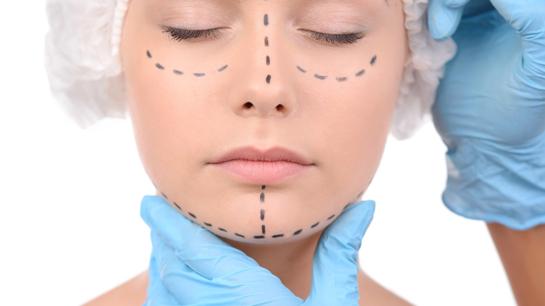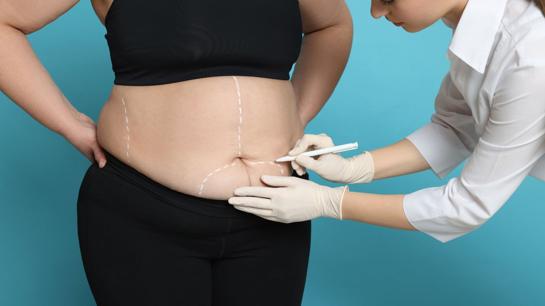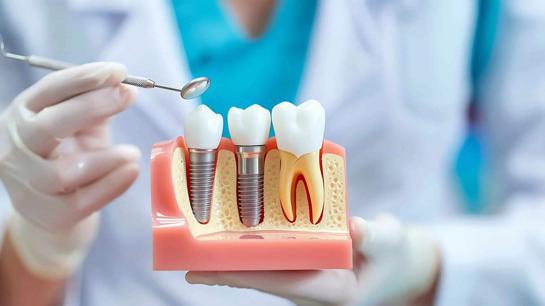Dental Bridges Abroad Guide
Curious about dental bridges abroad? This personal guide to dental tourism covers why people travel, cost savings, procedures, top destinations, what to expect, how to choose a clinic, and key aftercare tips for bridges and implants abroad.
The Real Reason People Start Thinking About Bridges Abroad
Let’s be honest—it’s not because you want an adventure. No one wakes up dreaming to get a dental bridge halfway across the globe. Most people start here for pragmatic reasons: a lost tooth (or two), the cost of dental care at home, maybe the never-ending “couldn’t you just get a partial?” from a well-meaning friend. The truth is: dental tourism, and bridges abroad specifically, aren’t trends—they’re real options. For some, they’re the only affordable way back to a normal meal or a wide, easy smile.
Maybe your dentist quoted a price that made you blink. Or you waited months just to get the first appointment. Or maybe, you know someone—a friend’s cousin, someone at work—who flew out, and seems genuinely happy with their results. It leaves you wondering “Could I really do this abroad? Would it be safe? Is it just about money, or is there something else at play?”
Let’s walk through the facts, the feelings, the downtime, and the unique world of dental bridges abroad.
What Are Dental Bridges? (And Why Are They So Important?)
If you’re already reading this, odds are you know the basics: a dental bridge fills in the gap where one or more teeth are missing. It’s made of pontics (the false tooth or teeth) and anchors—crowns, either on the remaining natural teeth or dental implants. The whole structure is custom-built for your unique bite, color, and function.
There’s a spectrum:
- Traditional bridges: Anchored on both sides, durable for molars or front teeth.
- Cantilever bridges: Used when only one side has a suitable neighboring tooth.
- Maryland/resin-bonded: Metal or ceramic “wings” bonded to the backs of nearby teeth.
- Implant-supported bridges: Best for multiple missing teeth, using dental implants as support.
A well-made bridge abroad isn’t just about looks (though it’s nice when people can’t spot the difference). It’s about chewing, speaking, keeping your jaw healthy, and even helping your face keep its natural shape. In short: it’s about dignity and normalcy.
Why Dental Tourism Makes Sense for Bridges Abroad
You might think, “Isn’t dental tourism just budget shopping?” But that’s only part of it. Here’s what real people report matters most:
- Cost savings. Prices vary but are routinely 50–70% lower for bridges abroad, even after accounting for flights and a recovery hotel.
- Access and speed. Instead of waiting months for lab time, a single trip (often under 2 weeks) covers consult, prep, and final placement.
- Integrated, up-to-date tech. Leading clinics embrace 3D scanning, CAD/CAM restorations, and high-end dental labs. Efficiency is impressive—even by Western standards.
- Bundled care and bilingual support. Most dental tourism clinics assign you a coordinator—often bilingual—who handles logistics, paperwork, and even airport transfers.
- Discretion. Abroad, your dental story is yours. No awkward run-ins at the grocery store when you’re lisping around temporaries.
- The comfort of a “reset.” It may sound minor, but many patients say being far from home helped them focus on recovery, not day-to-day pressures.
And yes—sometimes, a vacation is rolled in. But for most, this is about respect, hope, and getting back to daily life without constant dental drama.
Who Typically Chooses Bridges Abroad?
- Professionals frustrated by insurance coverage (or lack thereof).
- Parents and retirees looking for long-term, reliable solutions without draining savings.
- People with complex dental histories—failed bridges, crumbling fillings, jawbone changes—who want options, not shrugs.
- “Dental avoiders” who dread high-pressure clinics at home but feel surprisingly welcomed by the patient-first approach abroad.
It’s common for people to feel reassured when international clinics actually listen, explain clearly, and don’t speed you through just to hit a daily quota.
Where People Go for Bridges Abroad—and Why Location Isn’t Everything
The big picture: most fly to dental tourism hubs, where clinics specialize in bridges abroad and see international patients daily.
- Turkey (Istanbul, Izmir, Antalya): Modern clinics, strong English, and packages that include hotel.
- Hungary, Poland, Croatia: Boutique clinics in smaller cities, excellent lab work, plenty of English-speakers, and easy (for Europeans) travel.
- Mexico: Especially for Americans—low prices, fast service near border cities.
- Thailand, Vietnam, Costa Rica: Spa-level settings, impressive technology, good recovery options.
But—don’t obsess over country; focus on the specific clinic’s experience and technology. A great bridge in Thailand might outlast a poorly made one in London, and vice versa.
Specializations and Types of Bridges You’ll Find Abroad
- Full porcelain, zirconia, or porcelain-fused-to-metal bridges (not just budget acrylic).
- Implant-supported bridges for more involved tooth loss.
- Problem-solver bridges for patients with unique spacing, bite, or gum issues.
- All-on-4 or All-on-6 systems (partial/full arch), for those considering a middle path between a bridge and full implants.
- “Redo” or error-correction—from old bridges that failed, causing bite or speaking issues.
What sets the top clinics apart is honesty: a willingness to not sell you a bridge if it isn’t your best choice.
The People Behind Your Smile: Team and Medical Staff
- Prosthodontists leading the case—dental bridge experts, not just general dentists.
- In-house lab technicians: shaping and shading each bridge for comfort and life-like looks.
- English-speaking coordinators: connecting you at each step and checking in after you fly home.
- Dedicated aftercare staff: available during your first week overseas and for later questions.
You’ll notice: in good clinics, staff care is both warmer and less rushed than what many experience at home.
Accreditation, Technology, and How to Spot a Top-Tier Clinic
- Dental staff with active credentials and respected dental council memberships.
- Clear ISO or equivalent accreditation for the clinic and lab.
- On-site labs for same-day fixes (no long delays for courier corrections).
- Digital scanners, sophisticated color-matching—not “guesswork.”
- Real before/after photos from clinic cases—not stock images or “borrowed” portfolios.
The best clinics let you tour virtually or meet lab techs before you commit.
Equipment and The Patient Comfort Factor
- 3D digital impressions (no messy molds).
- In-clinic CAD/CAM lab for same-visit tweaks if required.
- Full sterilization and strict cross-infection protocols.
- Recovery space: soft food, strong coffee, Netflix-ready lounge.
That “extra” comfort? Not really extra—just modern patient care.
Diagnostics and Infrastructure: Beyond the Dentist’s Chair
- Virtual consults, with scan review and photo-based planning before travel.
- Digital and 3D x-rays, bite analysis, and color-matching on arrival.
- Collaboration with in-house lab tech, for adjustments same-day.
- Recovery and aftercare rooms, on-call nurse, and 24/7 support if needed.
When the “scary dental stuff” fades away, you know someone built the right system.
Treatment Journey: How (and Why) It Feels Different
- Remote diagnosis and consult
- Full oral exam and digital “test fit” designs
- Any old work/extractions or preps, temporaries placed
- Lab work: 2-7 day window, with “halfway” checks for shade/fit
- Trial, adjustment, and final cementation, instructions written down
- Pack up aftercare and relax—with honest check-ins and “what if” notes
Many patients say: “I felt listened to—and oddly cared for, every step.”
Numbers: What’s the Price Difference, Really?
| At home (USA/UK/Canada) | Bridges abroad | |
|---|---|---|
| 3-unit bridge | $3,000–$7,500 | $800–$2,200 |
| Implant bridge | $5,000–$15,000 | $2,000–$5,000 |
| Diagnostics/scans | $300–$800 extra | usually included |
| Temp solution | add’l charge | included |
| Hotel/travel | N/A | $400–$1,250 wk |
| Trip timeline | 2+ weeks at home | 7–10 days |
Get every quote in writing, and ask if “extras” might ever pop up.
Risks, Results, and Real-World Cautions
- Most patients do well—with careful hygiene and care.
- Sensitivity, bite feel, and minor speech quirks can crop up, but fade fast.
- Major issues (infection, misfit) are very rare in good clinics—but possible anywhere if not upfront.
- Aftercare and written instructions matter far more if you’re traveling home soon after.
Real honesty—choose clear instructions over cool websites every time.
Who Should Reconsider Dental Bridges Abroad?
- Uncontrolled gum disease or infections
- Unfinished ortho/jaw/major dental work
- Major health risk (unstable medical conditions, unwillingness to share info)
- Language/flight anxiety that’s unmanageable
Reputable clinics will nudge you to slow down or finish other treatments first—listen to that advice.
What to Ask to Sleep Well Before You Fly
- What are your last-year rates for redo/revision/infection?
- Who preps and who fits my bridge? Are they prosthodontists?
- Onsite or offsite lab?
- Warranty? Is it valid from home?
- Will you share records with my local dentist?
- Budget for extras?
Don’t be shy—every “dumb” question is, in reality, smart planning.
Life After: Eating, Speaking, Smiling—How Daily Life Changes
Most report bridges abroad are quietly transformative—eating apples again, confident in photos, and, surprisingly, “forgetting” anything feels artificial after a few weeks. Habits matter, and so does check-in with your home provider.
Why People Come Back—and What Would Make Them Think Twice
The happiest returnees ask the most questions, plan for “what-ifs,” and feel empowered by control over their care, not just costs.
The ones who’d pause? Those who rushed, skipped details, or left with doubts about anything from fit to follow-up.
Summary Table: Comparing Bridges at Home vs. Abroad
| Home | Bridges Abroad | |
|---|---|---|
| Price | $$$$ | $$ |
| Wait | Weeks–months | Days–weeks |
| Aftercare | Immediate local | Planning needed |
| Tech/Lab | Varies | Usually high-end |
| Language | Native | Often bilingual |
| Experience | Can be rushed | Patient-centered |
Wrapping Up: Dental Tourism Doesn’t Mean Cutting Corners—It Means Claiming Choice
Dental tourism for bridges abroad is about more than getting a deal. It’s about seeing yourself as worthy of high-caliber care, wherever you choose to receive it. With sound research, open questions, and patience for “imperfections” (in both smile and process), you can reclaim eating, talking, and grinning—with a little adventure thrown in.
The badge of a truly human clinic isn’t perfect marketing. It’s the warmth in the welcome, the time in the consult, the detail in the plan, and the confidence they share when you walk out with a new smile—and a fresh story to tell.
(For educational use only; confirm dental plans with a trusted provider before any international treatment.)





















